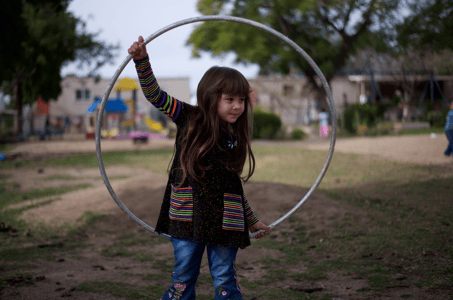
Teachers, like all of us, have a limited bank of time and attention. So, it should come as no surprise if they sometimes lose focus on what matters most for kids: interactions.
Teachers don’t lose focus because they don’t want to have positive interactions with children. I’ve yet to meet a teacher who didn’t want to be a positive force in kids’ lives.
But think about the teachers you know. How do they spend their time? How many different things are they asked to attend to in the classroom? Limited time and an excess of competing demands are real barriers for the teachers you support.
In our efforts to support these teachers, few of us can grant them more time or fewer responsibilities. What we can do is help teachers focus the best of their energies on the responsibilities that matter most.
Three steps to focus teachers’ attention on effective interactions:
- Recommend resources like the short video Effective Teacher-Child Interactions and the research summary Teacher-Child Interactions in Early Childhood that make the case for putting interactions first in the classroom. In your discussion of the resources, elicit teachers’ perspectives on the impact of effective interactions on children. Affirm, clarify, and extend teachers’ understanding of the significant and lasting impact of interactions on children’s lives.
Why should I do this? Research into how our minds manage our attention has shown that we are more likely to pay attention to the things we find meaningful. Resources like these, and your conversations about them, can help teachers sense greater meaning in their interactions with children.
2. Recommend the article The Toothpaste Theory of Child Development, which offers an analogy to help us discuss how interactions relate to other elements of classroom practice. In this article, co-director of the Fred Rogers Center, Junlei Li, explains that the active ingredient in toothpaste prevents cavities, and the many inactive ingredients, like flavoring, are valuable because they make us more likely to brush our teeth. Similarly, he explains that the active ingredient in ECE is interactions and that inactive ingredients in classrooms “are useful only when they enrich and empower the growth of human interactions between children and adults.”
Why should I do this? If we want teachers to more fully attend to the interactions in their classrooms, we need to help them understand the appropriate role of the many “inactive ingredients” they’re also asked to attend to.
3. Recommend the course Your Favorite Teacher and CLASS. Get to you know more about the teachers you support by talking about their favorite teachers. Elicit their perspectives on how their favorite teacher became effective, encouraging them to think about the likelihood that these teachers improved their practice over the years.
Why should I do this? We want teachers to want to improve their interactions and believe that they can. The course will remind teachers why they want to improve their practice, and you can use your discussion as an opportunity to communicate that CLASS-based research over the last decade has proven that teachers can improve their interactions with children.
Good luck! Let us know how it goes.
References
Grotzer, Miller, & Lincoln (2011). “Perceptual, Attentional, and Cognitive Heuristics That Interact with the Nature of Science to Complicate Public Understanding of Science.” In Myint Swe Khine (Ed.), Advances of Nature of Science Research (pp. 27-49). New York, NY: Springer.
Mack and I. Rock. (1998). Inattentional Blindness. Cambridge, MA: MIT Press.
Grotzer, T. (2012). Learning causality in a complex world: Understandings of consequence. Lanham, MD: Rowman & Littlefield Education.
